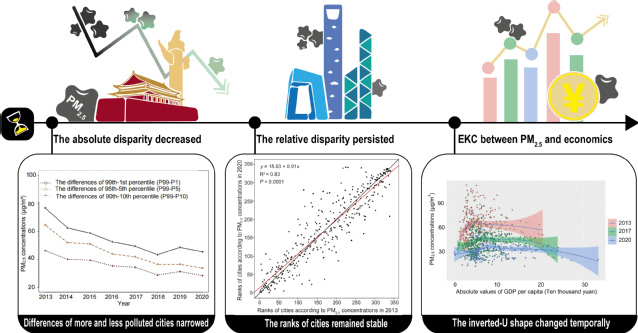
Highlights
– Absolute disparities in PM2.5 fell, while relative disparities persisted in China.
– Economic level was positively associated with air quality in developed areas.
– Economic level was negatively associated with air quality in less-developed areas.
– Economic development tended to promote cleaner air over time in China.
Abstract: The spatial disparity of air pollutants is one of the key influential factors for environmental inequality. We quantitatively evaluated the evolution of PM2.5 spatial disparity in China during 2013–2020, and investigated the associations between PM2.5 spatial disparity and economic indicators. Differences in PM2.5 between more- and less-polluted cities declined over time, suggesting decreased absolute disparity. However, the more polluted cities in 2013 remained so in 2017 and 2020, and vice versa, indicating persistent relative disparity. PM2.5 pollution levels increased with higher GDP per capita in less-developed areas of China, but such negative effects weakened over time, while economic development tended to promote cleaner air in developed areas of China. Therefore, policies to improve air quality and promote economic development simultaneously are needed in China to reduce the disparity of air pollution and promote all people to enjoy environmental equality.
Keywords: Fine particulate matter; Spatiotemporal disparities; Gini coefficient; Environmental Kuznets curve
DOI: 10.1016/j.eehl.2023.08.007
Authors: Su Shi, Weidong Wang, Xinyue Li, Chang Xu, Jian Lei, Yixuan Jiang, Lina Zhang, Cheng He, Tao Xue, Renjie Chen, Haidong Kan, Xia Meng*